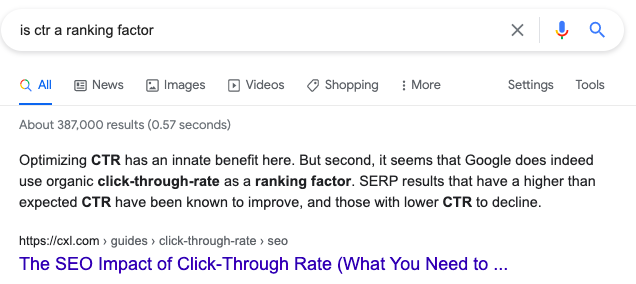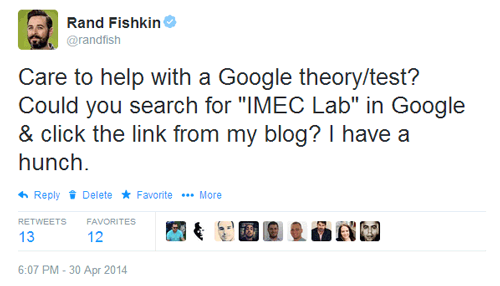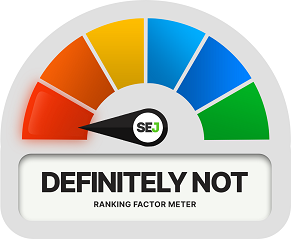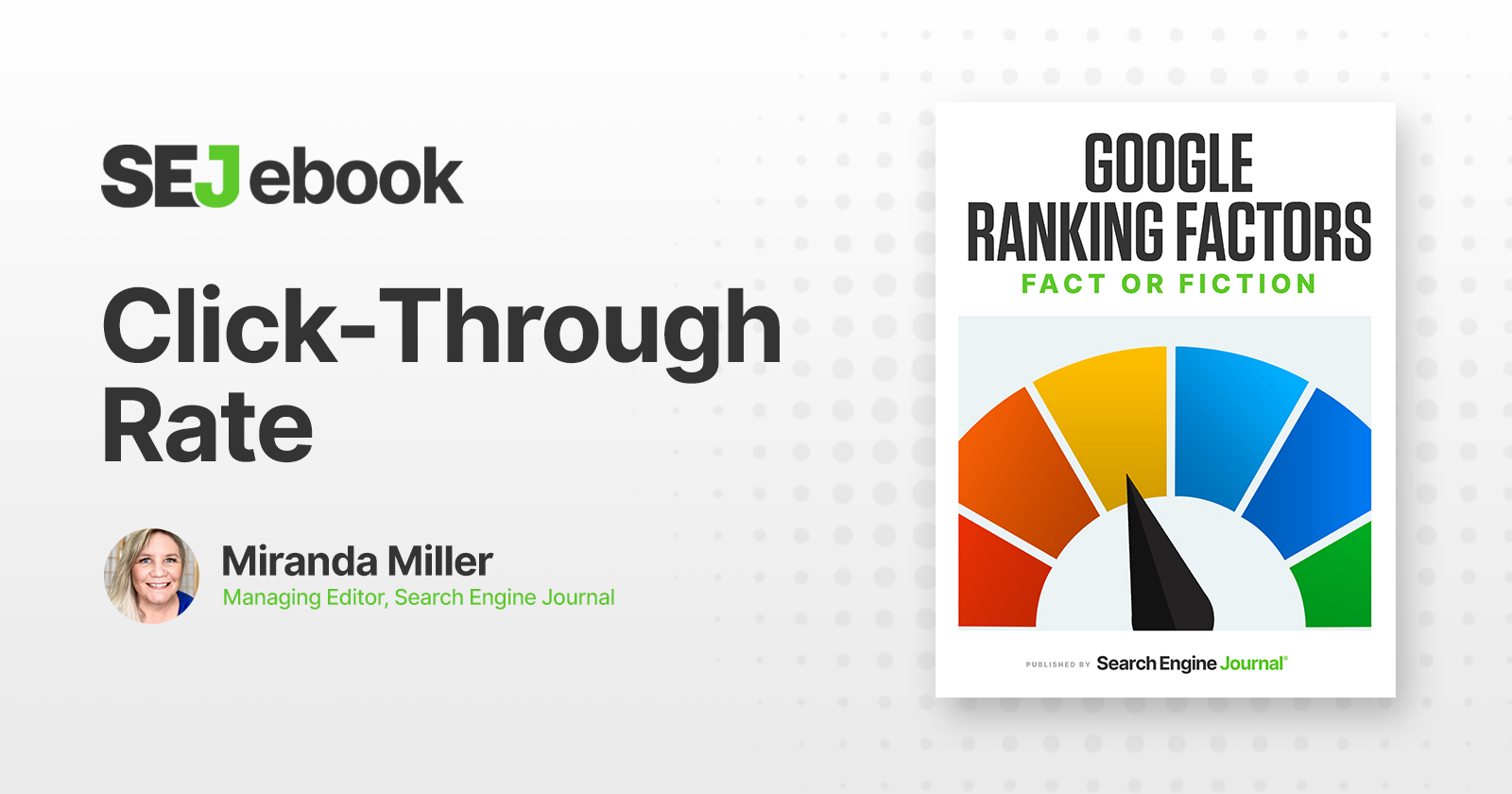Is click-through rate a Google ranking factor? Let’s ask Google.
 Screenshot from Seach for [is cta a ranking factor], October 2021
Screenshot from Seach for [is cta a ranking factor], October 2021Of course, fact-checking is not as simple as using whatever comes up first in Google search as verification – in fact, please don’t ever do that.
To determine whether CTR is a ranking factor, we’re going to have to do a bit of digging.
The Claim: Click-Through Rate (CTR) as a Ranking Factor
This one has been a hotly contested topic almost as long as we’ve practiced SEO.
In his 2002 paper Optimizing Search Engines using Clickthrough Data, Thorsten Joachims of Cornell argued that “a good information retrieval system should present relevant documents high in the ranking.” Click-through data from the search engine’s query log combined with the log of links clicked by users should be used in ranking, he said.
In the last five years, Larry Kim has argued for CTR as a ranking factor, and Eric Enge against it. AJ Kohn explained why he believes it’s a ranking signal; Dan Taylor took a deep dive into why he believes it is not.
So who’s right?
Let’s take a look at the evidence.
The Evidence for Click-Through Rate (CTR) as a Ranking Factor
In 2016, Larry Kim conducted an experiment comparing the CTRs of 1,000 keyword terms in the same niche in both paid and organic search. “Something unusual is happening,” he said, adding that, “The difference (we think) is that RankBrain is boosting the search rankings of pages that have higher organic click-through rates.”
Kim concluded at the time that click-through rate and ranking were codependent variables; that there is a relationship there, but its exact nature is unclear.
We must not confuse correlation with causation. And that’s the thing – this debate over whether CTR is a ranking factor begs the question: Is it direct or indirect?
For our purposes here, we’re strictly looking at whether each factor is used by Google in its ranking algorithms. There are potentially thousands of factors that indirectly support direct ranking factors, and we need to be careful not to confuse the two.
That was the issue with Rand Fishkin’s 2014 CTR experiment in which he published a blog and asked people to search a specific term, then click on the link in the SERPs:
 Screenshot from Twitter.com, October 2021
Screenshot from Twitter.com, October 2021The blog post received 228 visits and shot to the #1 spot in Google that evening.
As Fishkin said, “Let’s be clear – this is not enough evidence to say for certain that Google is definitively using query and click volume to rank webpages. There may be other factors at work.”
Even so, he titled the piece ‘Queries & Clicks May Influence Google’s Results More Directly Than Previously Suspected.’ And a legend was born.
As Enge explained, Fishkin’s experiment seemed to indicate that Google was using CTR at the time within its freshness algorithm to surface trending topics – not that CTR was influencing Google’s results any more than previously suspected.
The Evidence Against Click-Through Rate (CTR) as a Ranking Factor
As Roger Montti noted in his 2018 evaluation of CTR research papers, there were major issues with CTR as a prospective ranking factor even in Joachims’ aforementioned 2002 paper. Even back then, experts recognized that using CTR as a ranking factor was vulnerable to manipulation.
You can buy everything from Facebook Likes and Instagram followers to links, comments, and spun articles.
Why wouldn’t people buy clicks, too?
They absolutely would, if this were actually a ranking factor.
Now, Google has confirmed that CTR is used alongside other engagement metrics in controlled search quality tests (as documented by Enge, based on a Googler’s 2016 SMX West deck that has since been made private).
But it’s not a ranking factor.
Not convinced? Google’s Gary Illyes confirmed CTR is not a Google ranking factor at Pubcon Las Vegas 2016.
“If you think about it, clicks in general are incredibly noisy,” Illyes said. “People do weird things on the search result pages. They click around like crazy, and in general it’s really, really hard to clean up that data.”
CTR is also used for personalization, Illyes said, in that the types of results an individual typically chooses can “teach” Google’s algorithm which types of results that person prefers.
But can CTR impact your website’s performance at scale as a direct ranking factor?
No.
Click-Through Rate as a Ranking Factor: Our Verdict

Bottom line: There is no compelling evidence to support the idea that Google uses CTR as a direct search ranking signal.
Which means there’s no point trying to game this one – Google was onto it decades ago.
Should you track your organic CTR and try to improve it? Yes – because it is one metric you can use to understand whether your content is successful.
It won’t help you rank better on Google. But getting more traffic to your website is always a good thing.
Click-through rate is too noisy, messy, and easy to game to be taken seriously as a ranking factor.
There are plenty of more productive places to focus your SEO efforts!
Featured Image: Paulo Bobita/SearchEngineJournal





